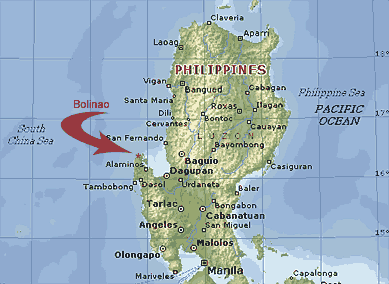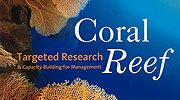|
Southeast Asia:
Bolinao Marine Laboratory (BML)
Marine Science Institute, University of Philippines
 Principal address: Principal address:
Marine Science Institute
University of Philippines
Dilliman
1101 Quezon City
Philippines
Ph: +632 922 3962
Fax: +632 924 7678
Website:
Marine Science Institute
Principal Contacts:
COE Rep:
Director:
Deputy Director for BML:
Deputy Director for Research:
Deputy Director for Instruction:
Name and affiliation
Bolinao Marine Laboratory (BML), Marine Science Institute, College of Science, University of Philippines
Local Area Description
Bolinao, Pangasinan is a coastal town in northwestern Philippines. It lies along the eastern edge of the South China Sea and experiences the northeast monsoon from November to March, the southwest monsoon from June to October, and weak easterlies from April to May.
Reef type:
The reefs of Bolinao are of the fringing type, with slopes dropping to 120m in certain areas. Reef flats are mostly sandy-muddy and covered with seagrasses and seaweeds while some forereefs extend up to several km from the shore, with coral cover in certain places reaching down to about 30 m.
Live coral cover averages about 20%. There are more than 100 fish species. However, important fish groups and mammals, such as sharks and dolphins that were previously observed along the Bolinao Channel (ca. 1950’s) are no longer common in the area (Nanola 2002).
Economic Value:
Coral reef fisheries represent an average of 15% of the total Philippine fisheries production, although in certain municipalities like Bolinao, their contribution may be as high as 25-30%. If properly conserved, the potential sustainable fisheries from coral reefs may be estimated at US$31,900 to $113,000 per square km (White and Cruz-Trinidad 1998). Of several towns along Lingayen Gulf, Bolinao has the highest number of municipal fishermen, (about 3,000 in 1985, representing ~20 % of the total municipal fishers in the Gulf) and accounts for about one-third of the total number of fishing boats operating in the area.
Disturbances:
The Bolinao reef complex has been subjected to destructive fishing practices such as blast and cyanide fishing. Strict enforcement of the fisheries laws by the municipal government from the mid 80’s to the present appears to have reduced the number of blasts. Cyanide is still being used to catch fish in the area but there is insufficient information to gauge the degree of use. Over fishing has been documented as another major stress factor and natural calamities such as storms also cause major disturbance. Thus, the reefs are in need of rehabilitation and restoration.
Legal Protection:
At present, there are two protective zones established in Bolinao through a municipal ordinance --- one fronting the UPMSI marine laboratory (see below) and a community-initiated sanctuary in Binabalian. Other marine protected areas are currently being planned.
Regional collaboration
1. Local / regional partners, linkages to non-government organizations (NGO's), government agencies:
2. Regional/ international research partners, networks:
UPMSI undertakes collaborative research with local, national, and international agencies. UPMSI, for example, has served as a major implementing agency in various ASEAN marine science programs. UPMSI is also represented in a number of national and international committees and organizations concerned with marine resources and the marine environment. Many of the staff are members of professional organizations and editorial boards of local and international journals. Examples include:
- Regional/International - JSPS (Japanese Society for the Promotion of Science)
- Centro de Estudios Avanzados de Blanes, Spain
- Hokkaido University
- University of South Florida
- Universiti Putra Malaysia
- Netherlands Institute of Ecology
- International Institute for Infrastructural, Hydraulic and Environmental Engineering, Netherlands
- Coastal Resources Institute, Prince of Songkla University, Thailand
- University of New Hampshire, US
- James Cook University, Australia.
3. Linking science to management and policy advice:
Local area management Plan:
A local area management plan has been implemented through the LGCAM Commission to manage the marine resources of the area. The programs and projects under the LGCAM Commission include:
- fisheries management
- environmental quality management
- coastal zonation
- rehabilitation of linked habitats
- rehabilitation and enhancement of critical habitats
- aquaculture development
- alternative livelihood for fishing families
- institutional development.
A comprehensive municipal coastal development plan has been formulated by a multi-sectoral committee with the assistance from an IDRC-Canada project on Community-based Coastal Resource Management. This project was implemented by the UP -MSI, Haribon Foundation and the UP College of Social Work and Development (CSWCD). The three-year project (1995-1997) involved resources monitoring, community organizing and livelihood
development. Participatory resource monitoring was attempted. Mangrove reforestation was implemented in barangay Pilar. UP-MSI is starting up another 3-yr follow-up project with support from the Netherlands to consolidate resource management initiatives.
4. Linkages to local or regional NGOs, activities/projects with relevance to Coral Reef Targeted Research:
- Sustaining Management of Coastal Resources in Lingayen Gulf Project
(Coastal resource management project, 2003-2007, further details...)
5. Linkages to Coral Reef Targeted Research working groups and COE activities:
- Edgardo D. Gomez (Restoration & Remediation WG);
- Laura David (Remote Sensing WG);
- Helen T. Yap (Bleaching WG);
- Porfirio Aliño (Modeling & Decision Support WG)
|

